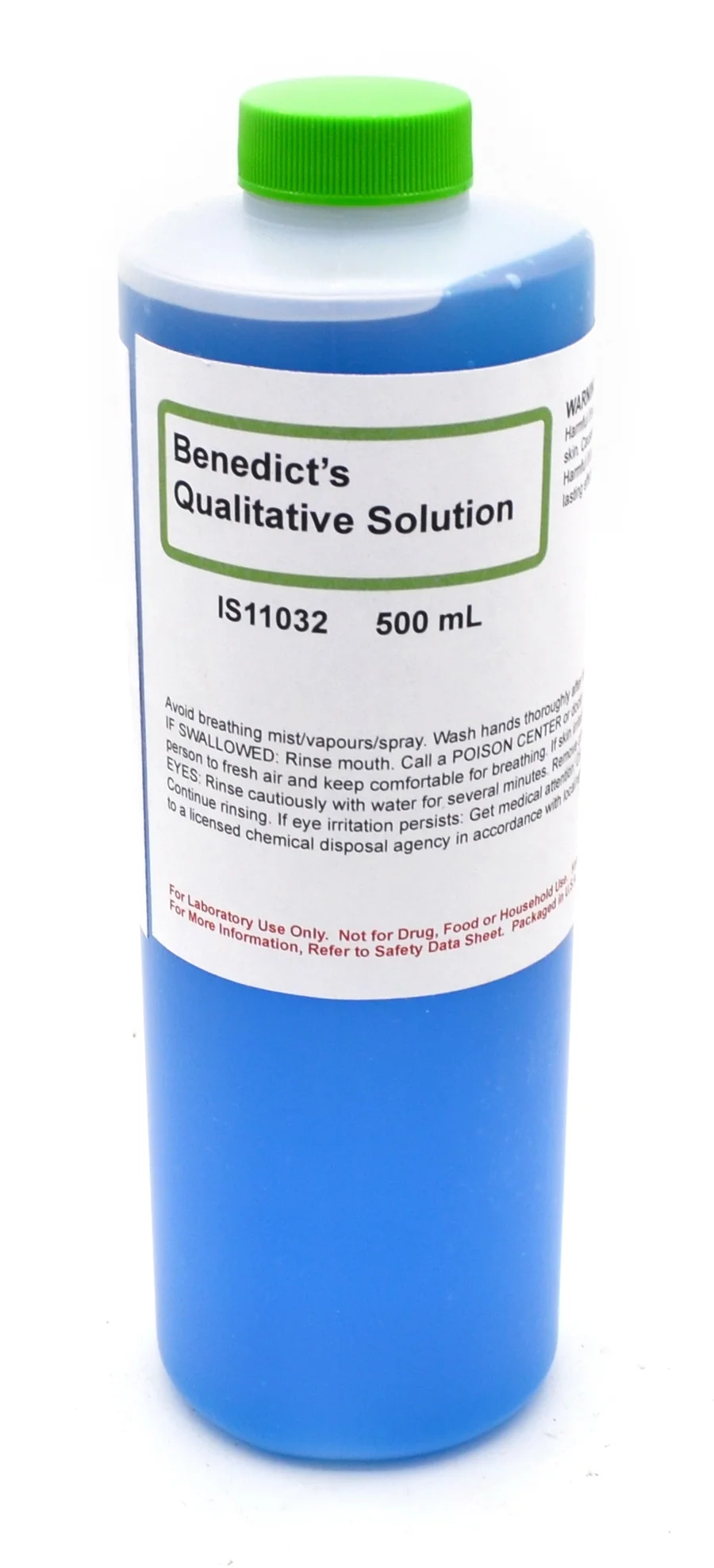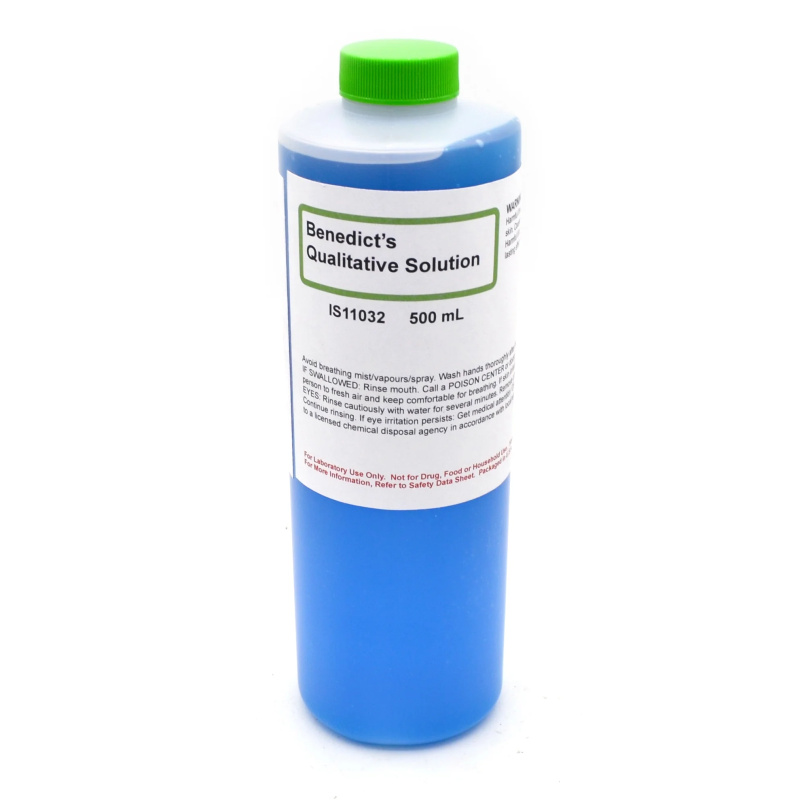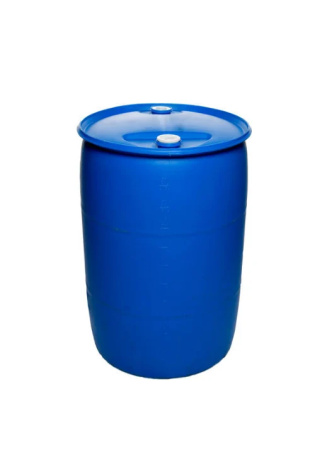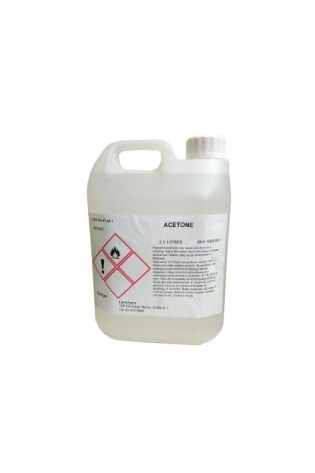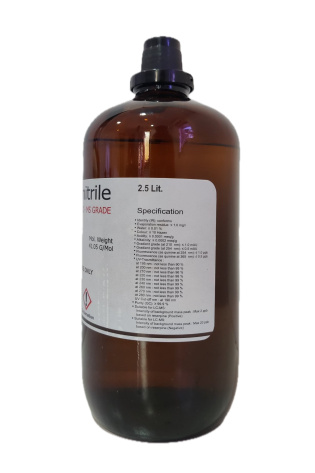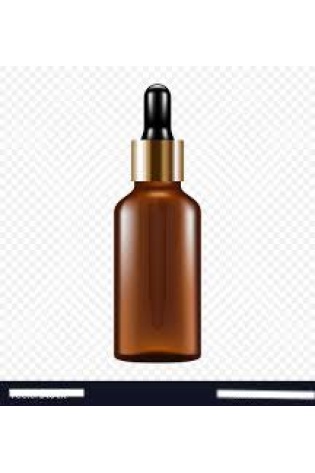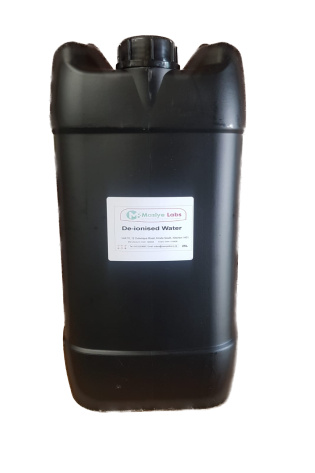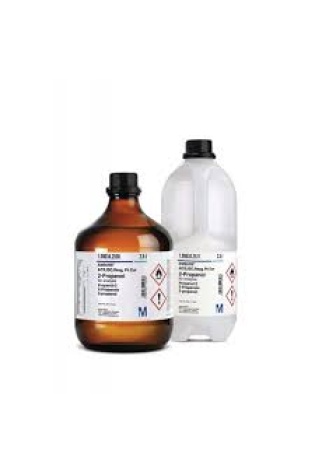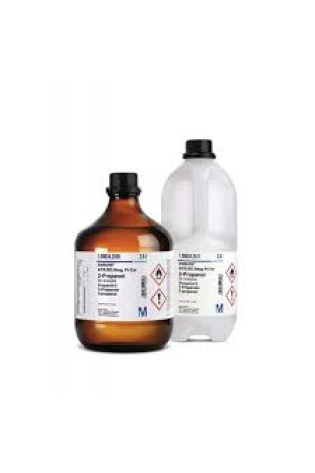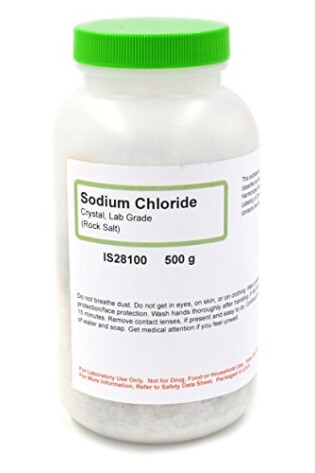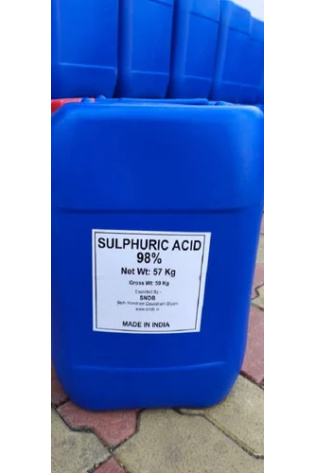Benedict’s Reagents 500ml
Benedict’s reagent is primarily used in a laboratory setting to test for the presence of reducing sugars. It’s a qualitative test, meaning it indicates the presence or absence of these sugars, and can also provide a semi-quantitative assessment based on the color change.
Benedict’s Reagents 500ml key uses in the lab:
Detecting reducing sugars:
Benedict’s reagent reacts with reducing sugars (those with a free aldehyde or ketone group) causing a color change from blue to green, yellow, orange, or red depending on the concentration of the sugar.
Identifying monosaccharides and some disaccharides:
It’s effective in detecting simple sugars like glucose, fructose, and lactose, as well as some disaccharides like maltose.
Qualitative and semi-quantitative analysis:
The test can be used to qualitatively identify reducing sugars and, by observing the color intensity, to get a rough idea of the sugar concentration.
Clinical applications:
Benedict’s test is sometimes used as a presumptive test for glucose in urine samples, indicating potential diabetes.
Benedict’s Reagents 500ml
How it works:
Benedict’s Test – Reagent, Composition, Principal and Uses
Benedict’s reagent contains copper(II) ions, which are reduced to copper(I) ions by the reducing sugar in an alkaline solution. This reduction is indicated by the color change of the solution. A brick-red precipitate of copper(I) oxide forms at higher sugar concentrations.
Important considerations:
While it’s useful for detecting reducing sugars, Benedict’s test is not effective for detecting complex carbohydrates like starch.
The test is not highly accurate for quantitative measurements, and other methods are preferred for precise sugar quantification.
Benedict’s Reagents 500ml
